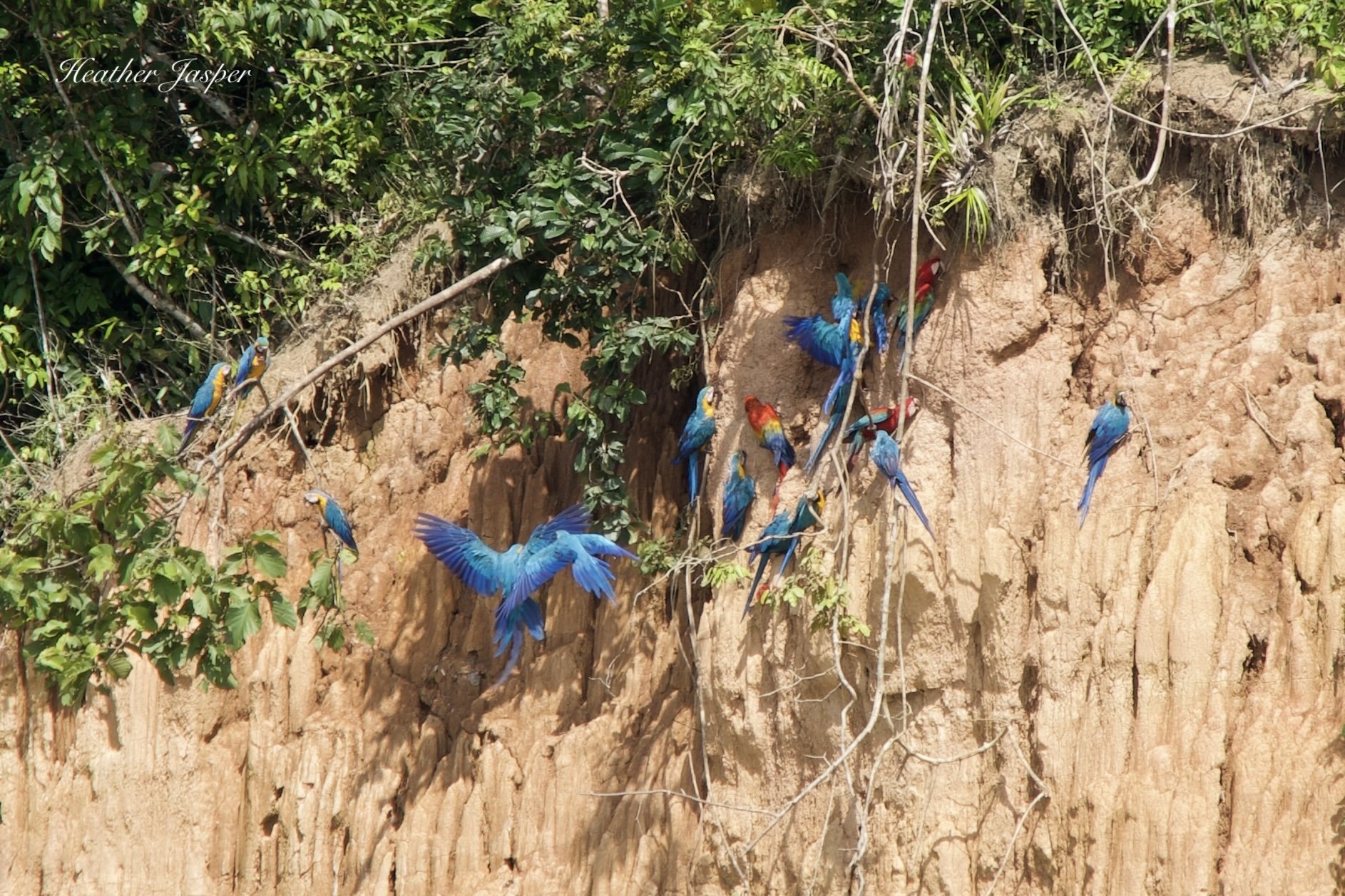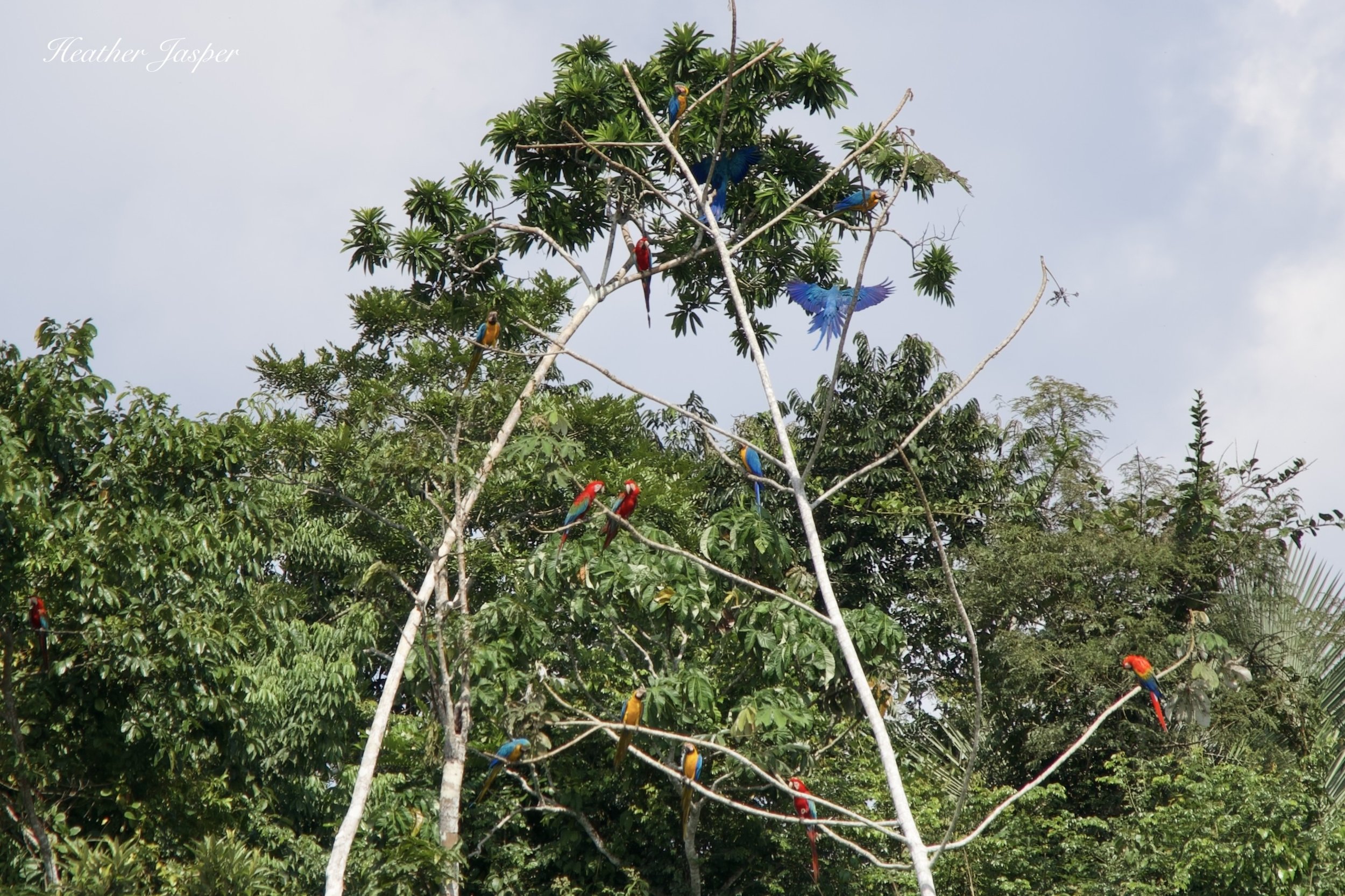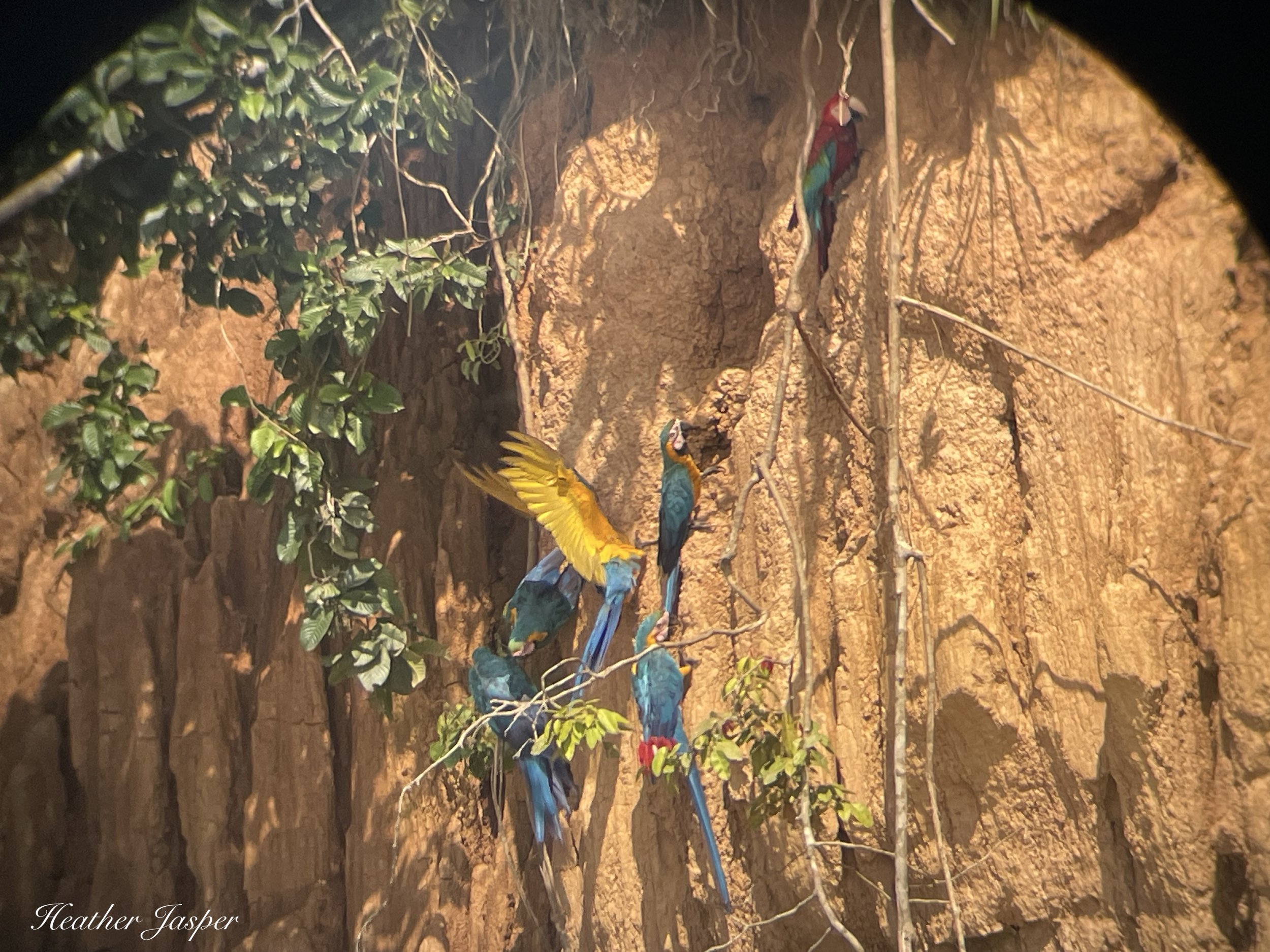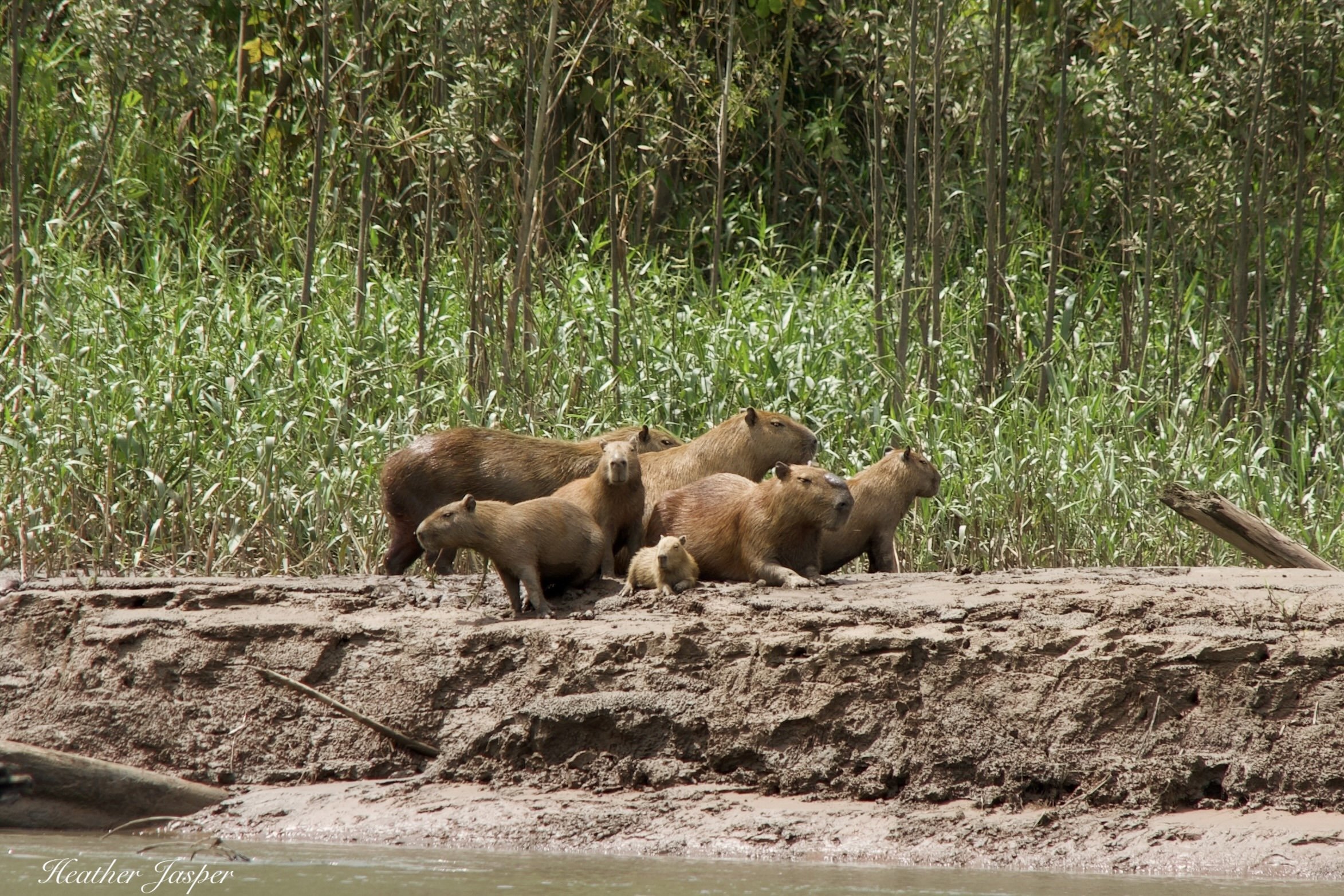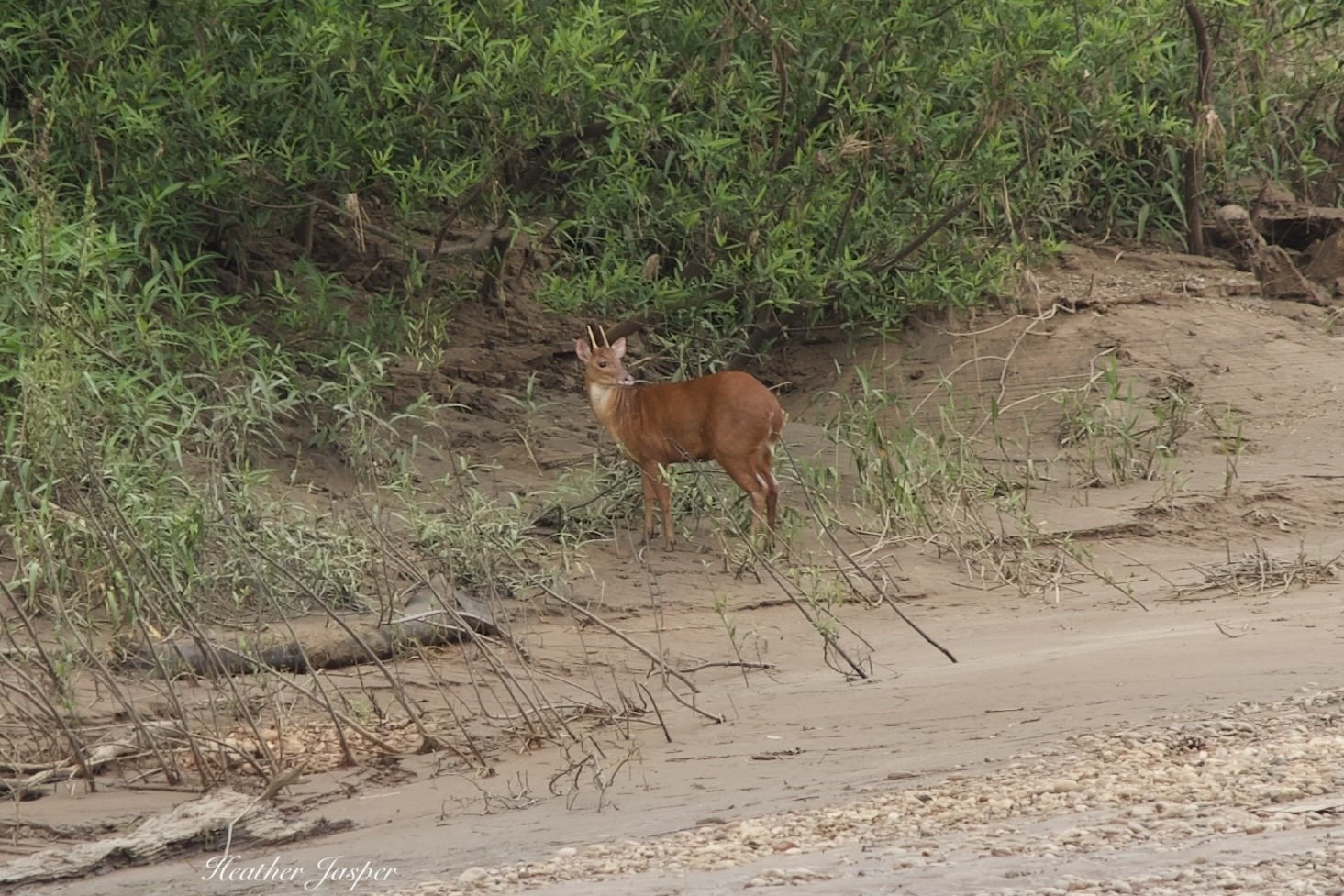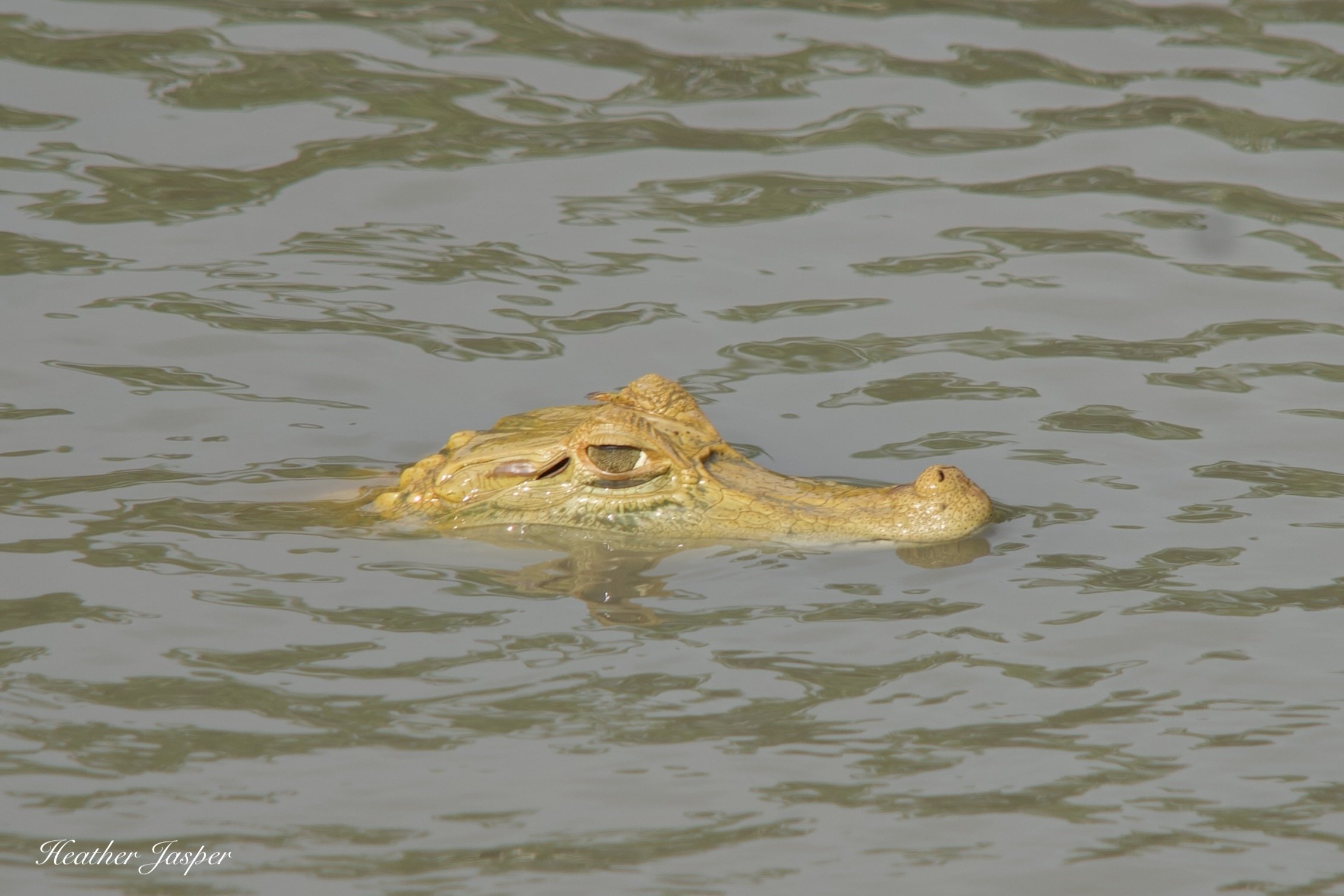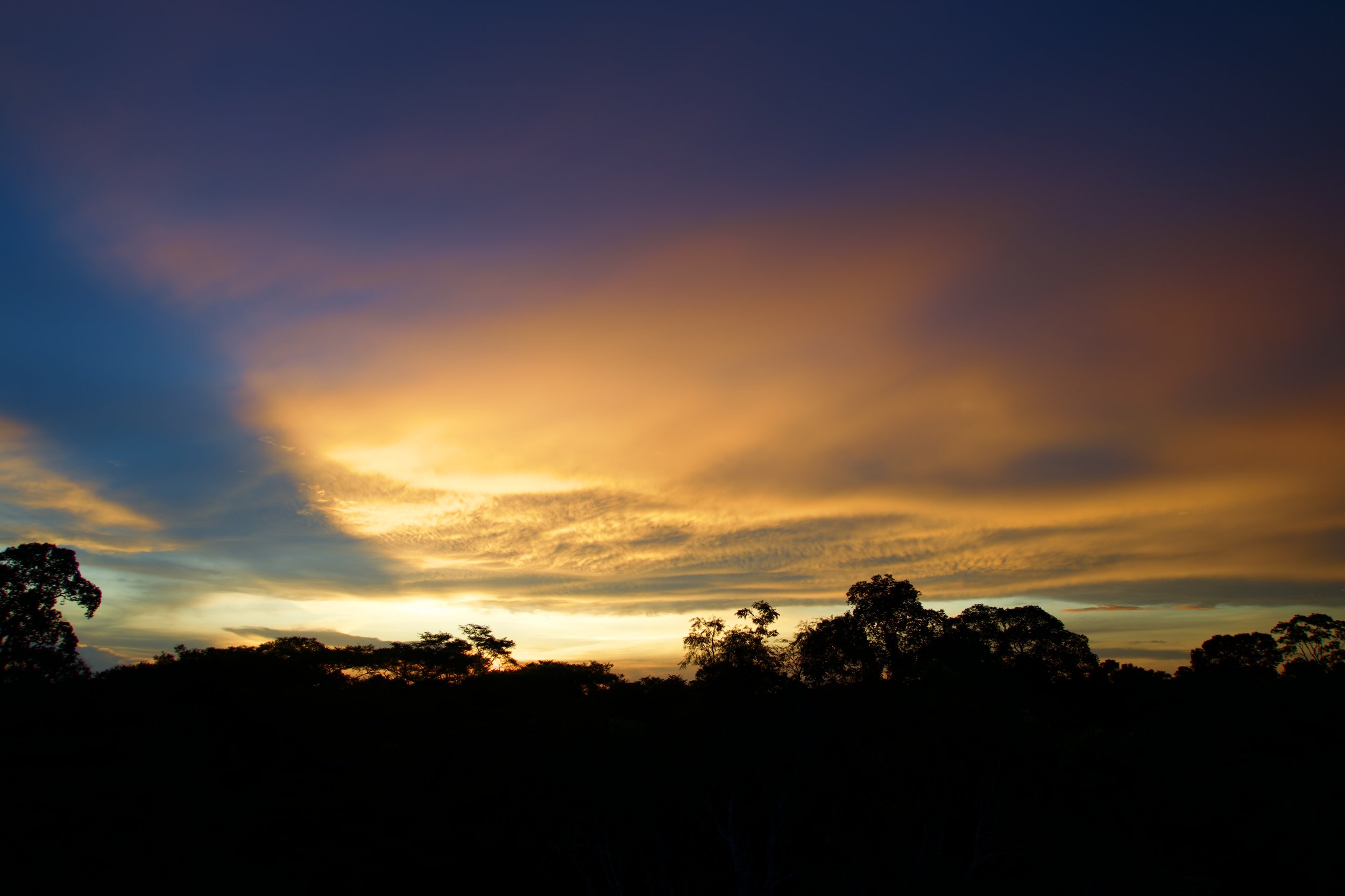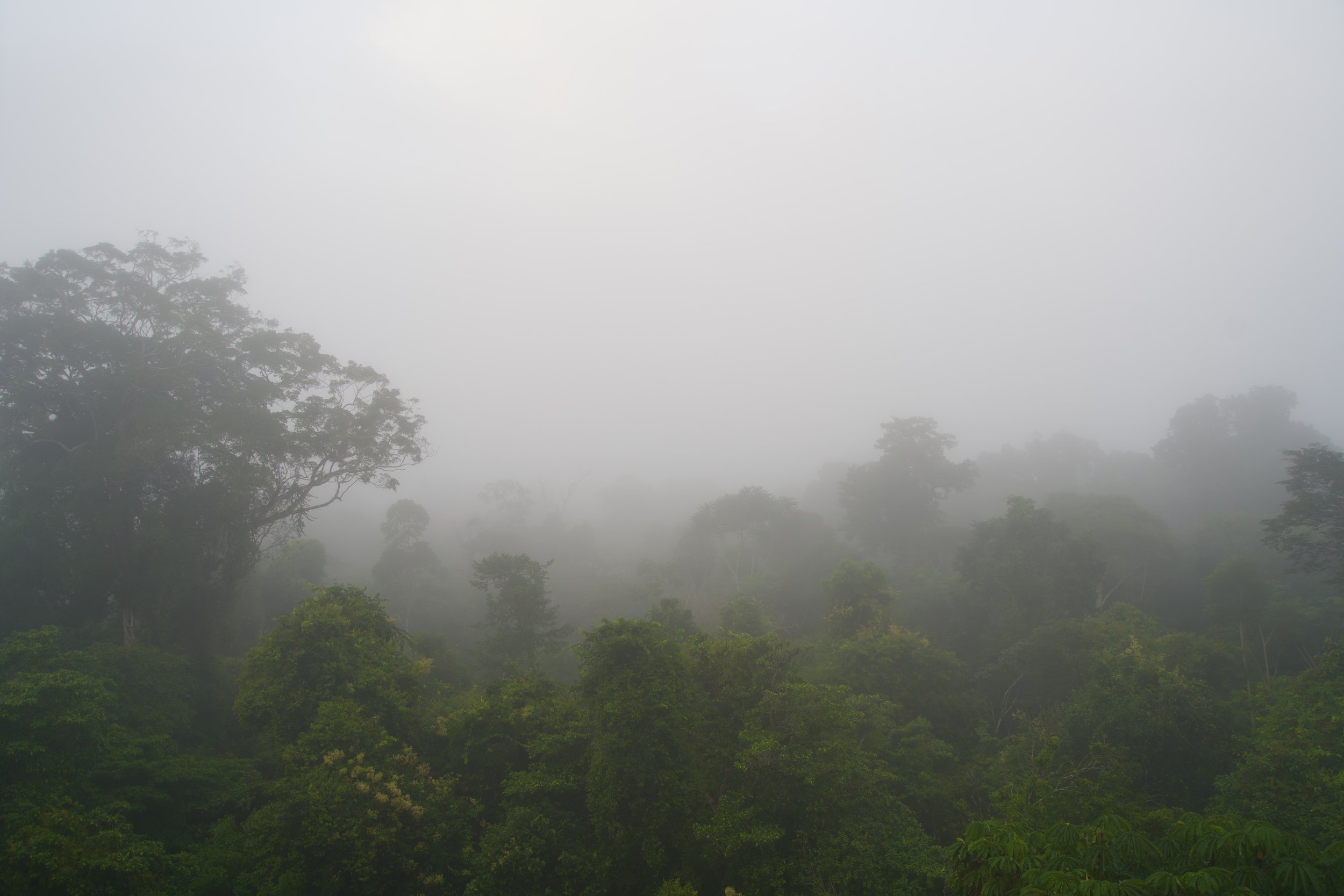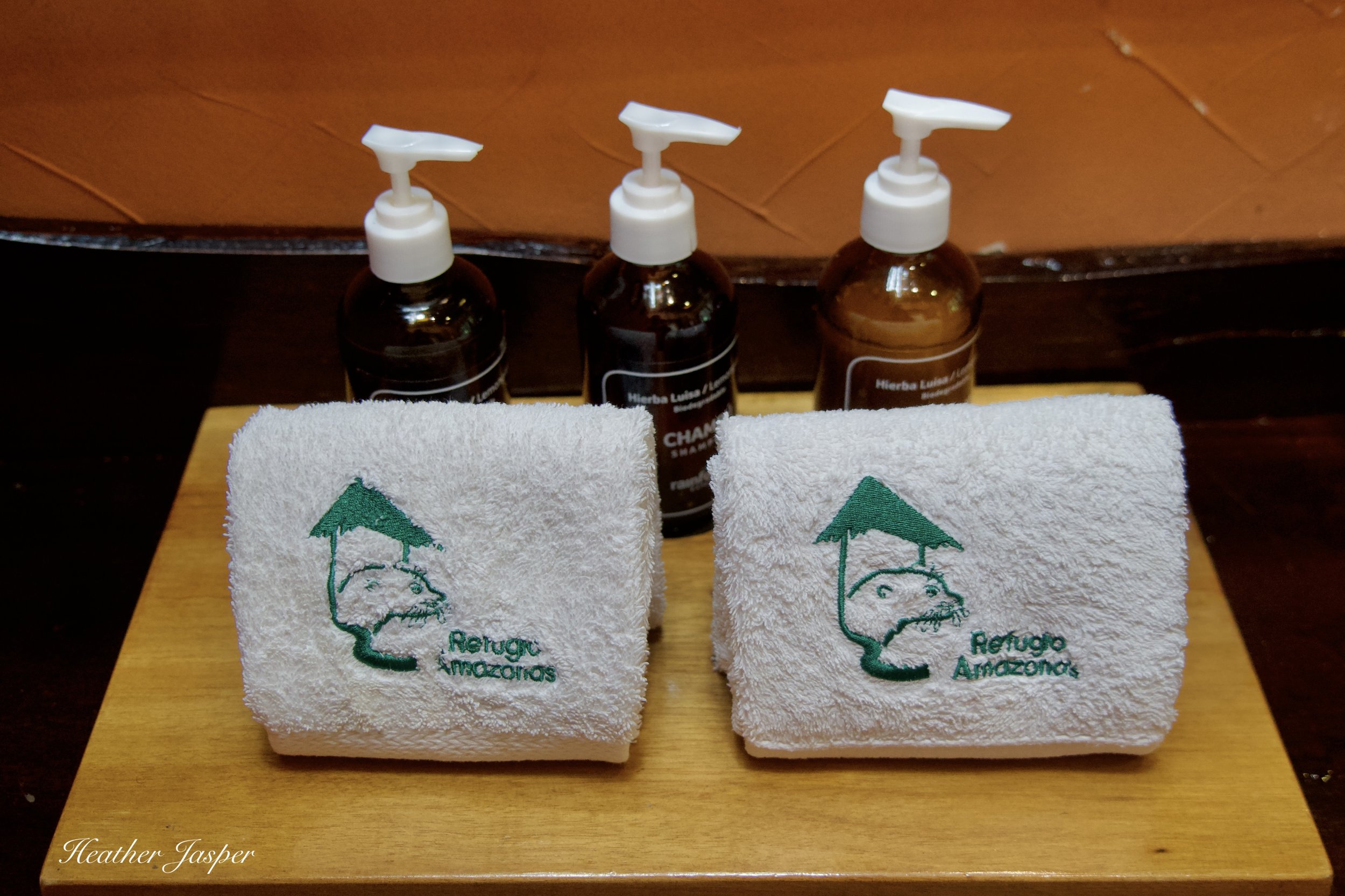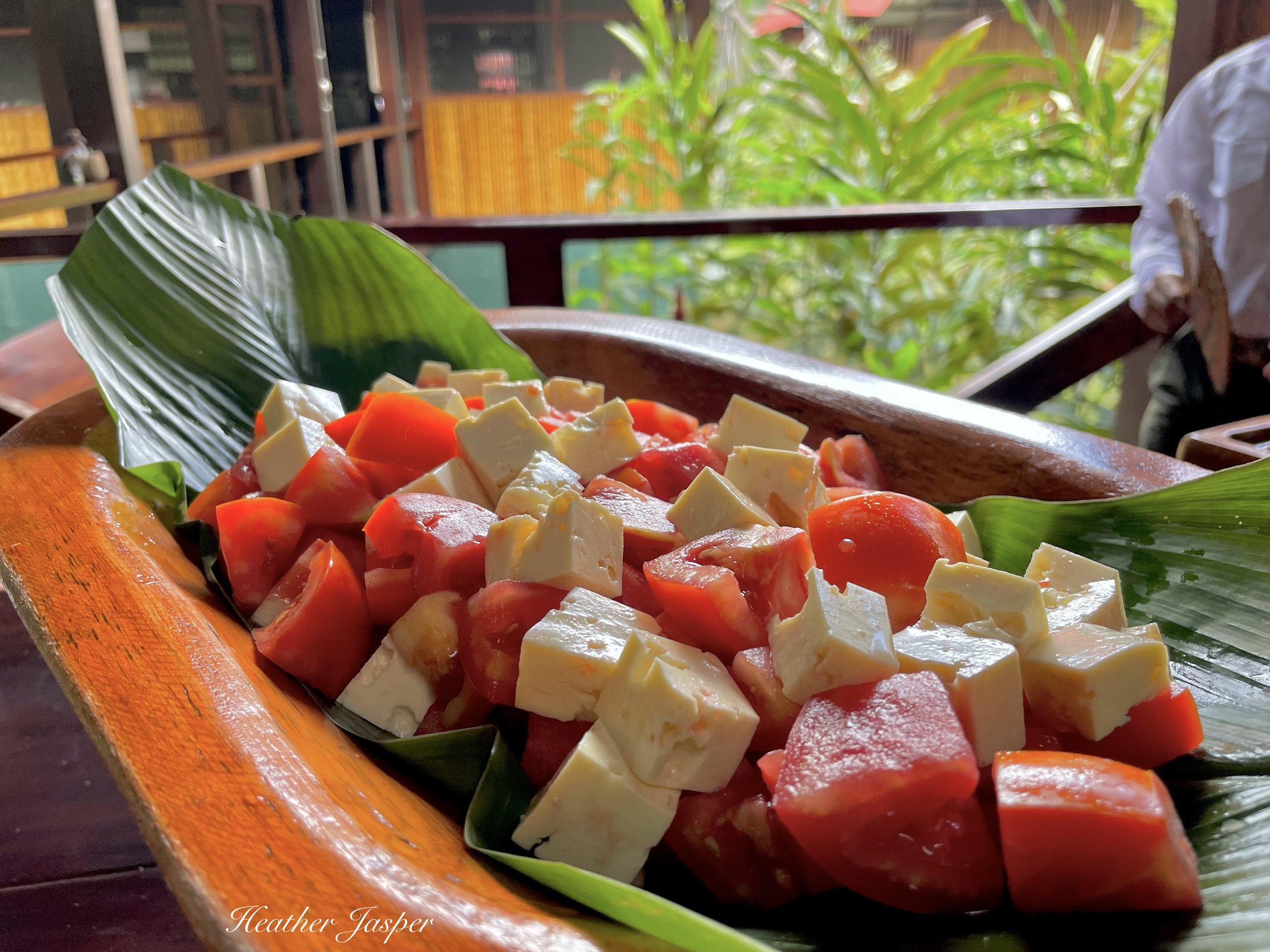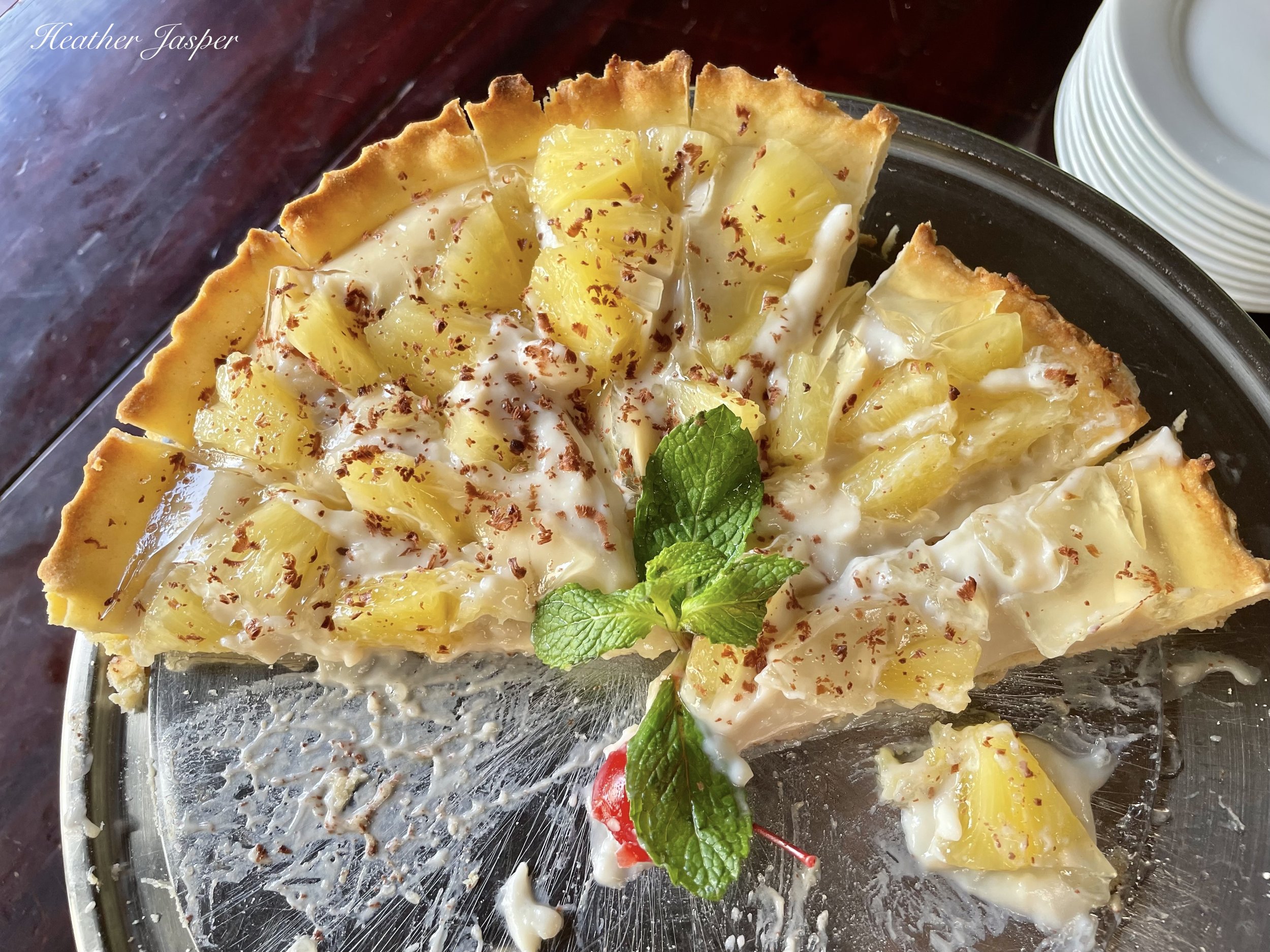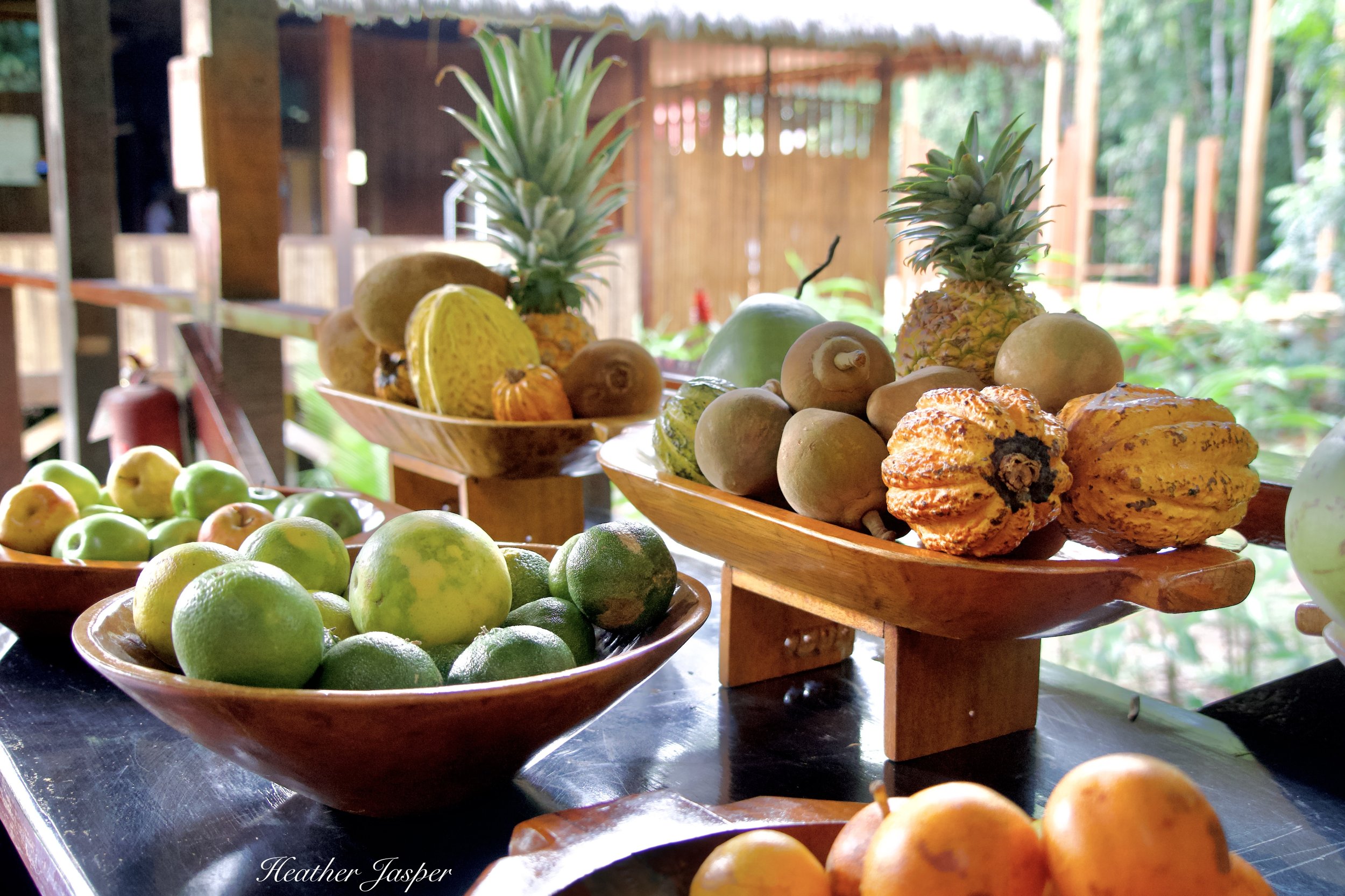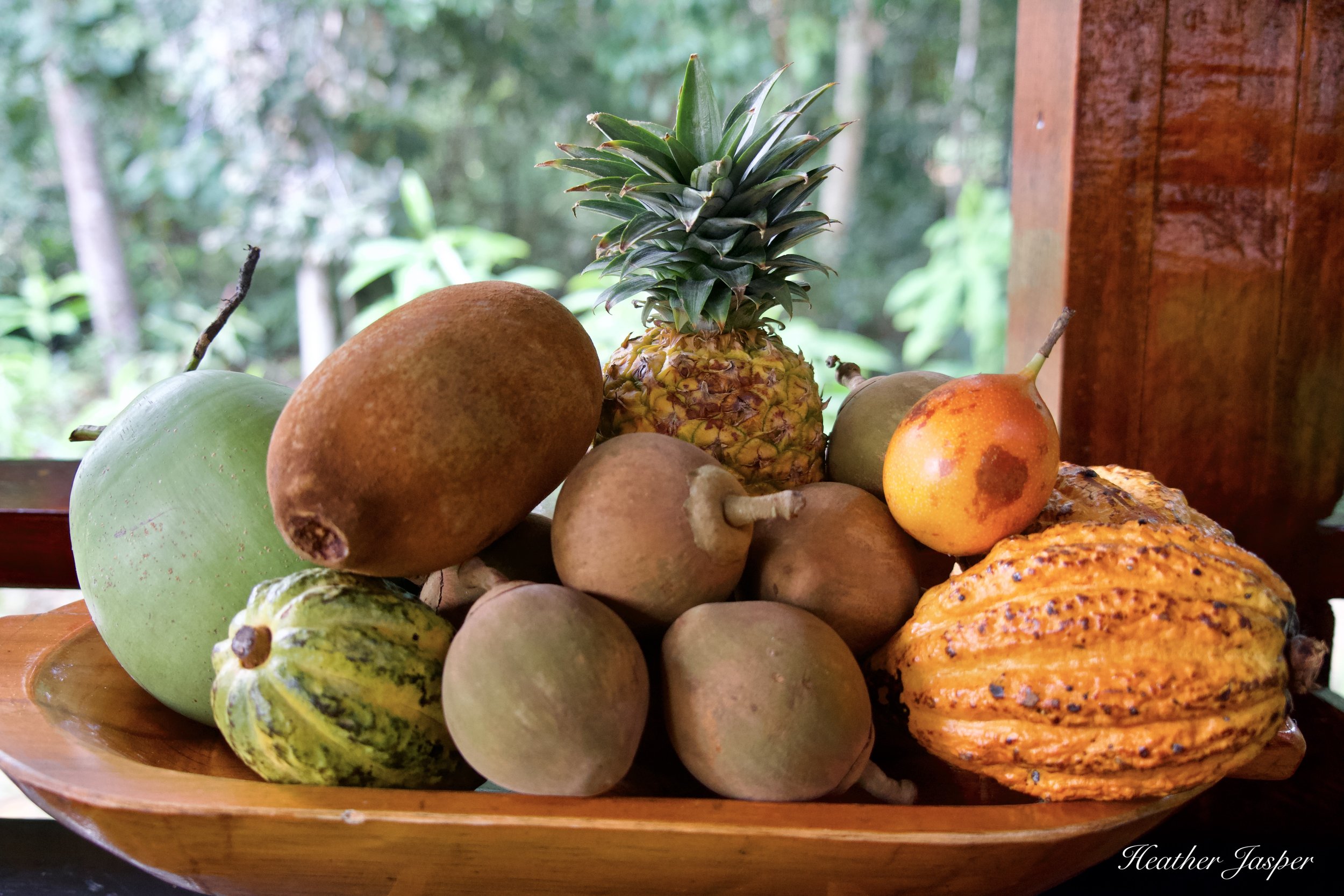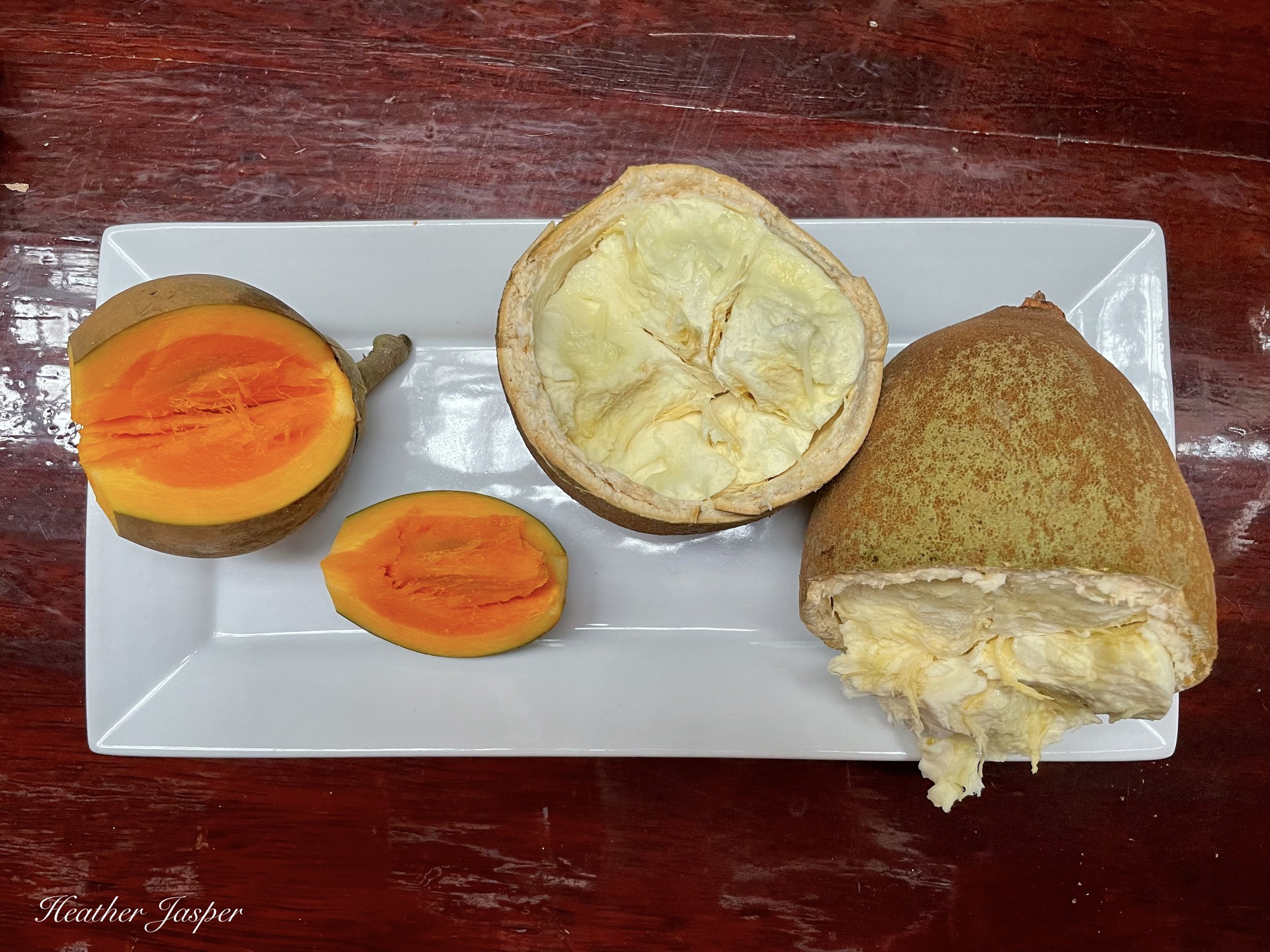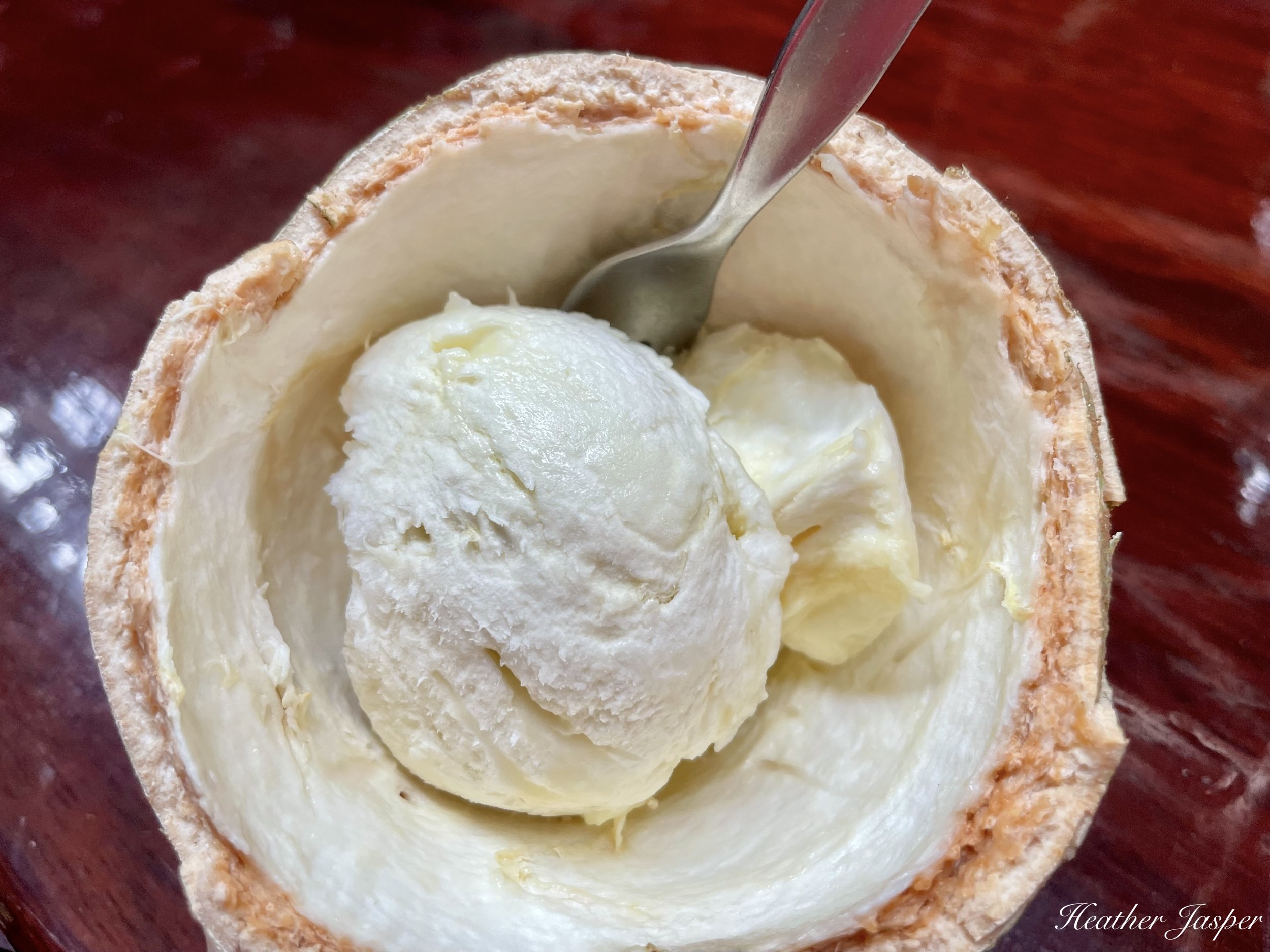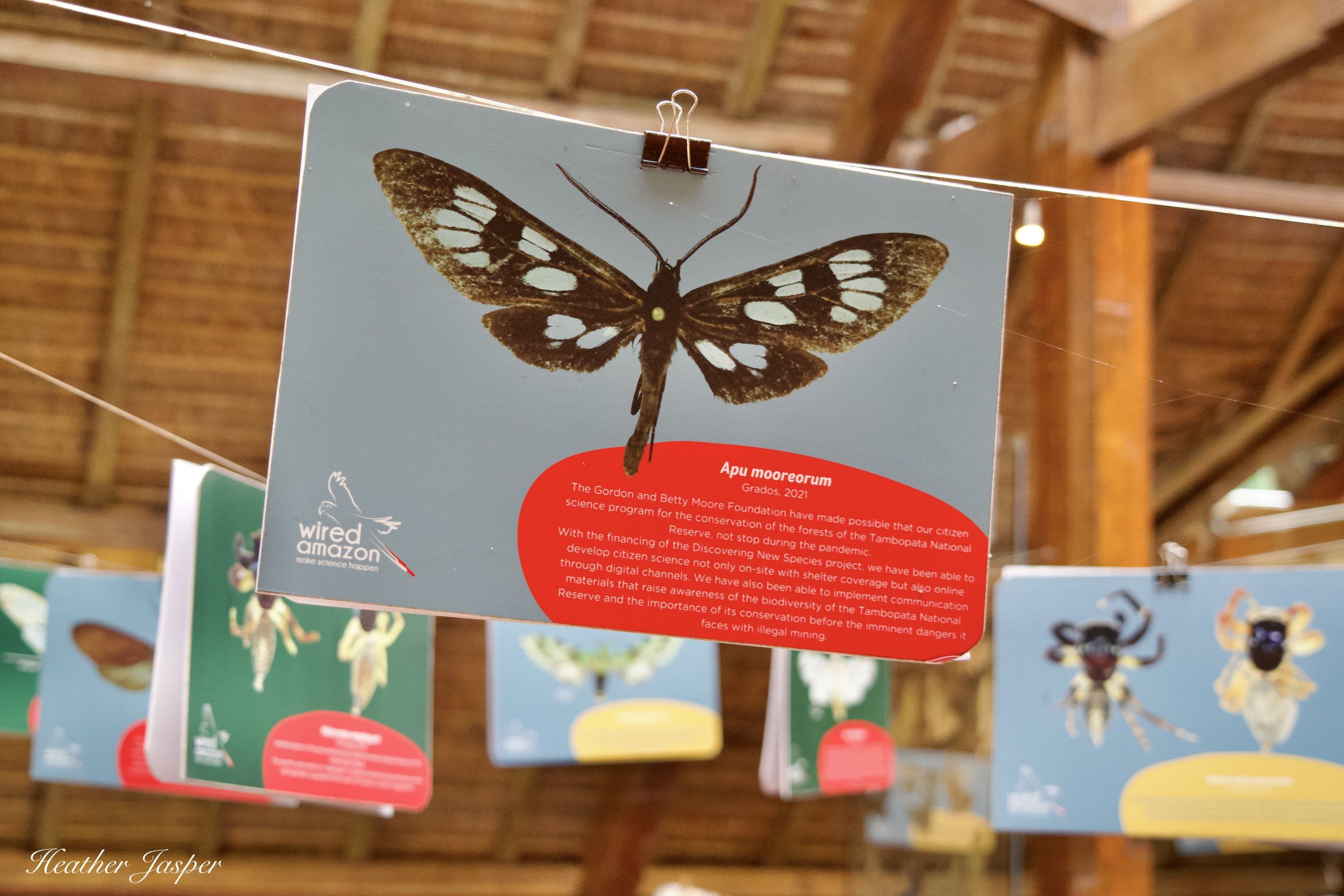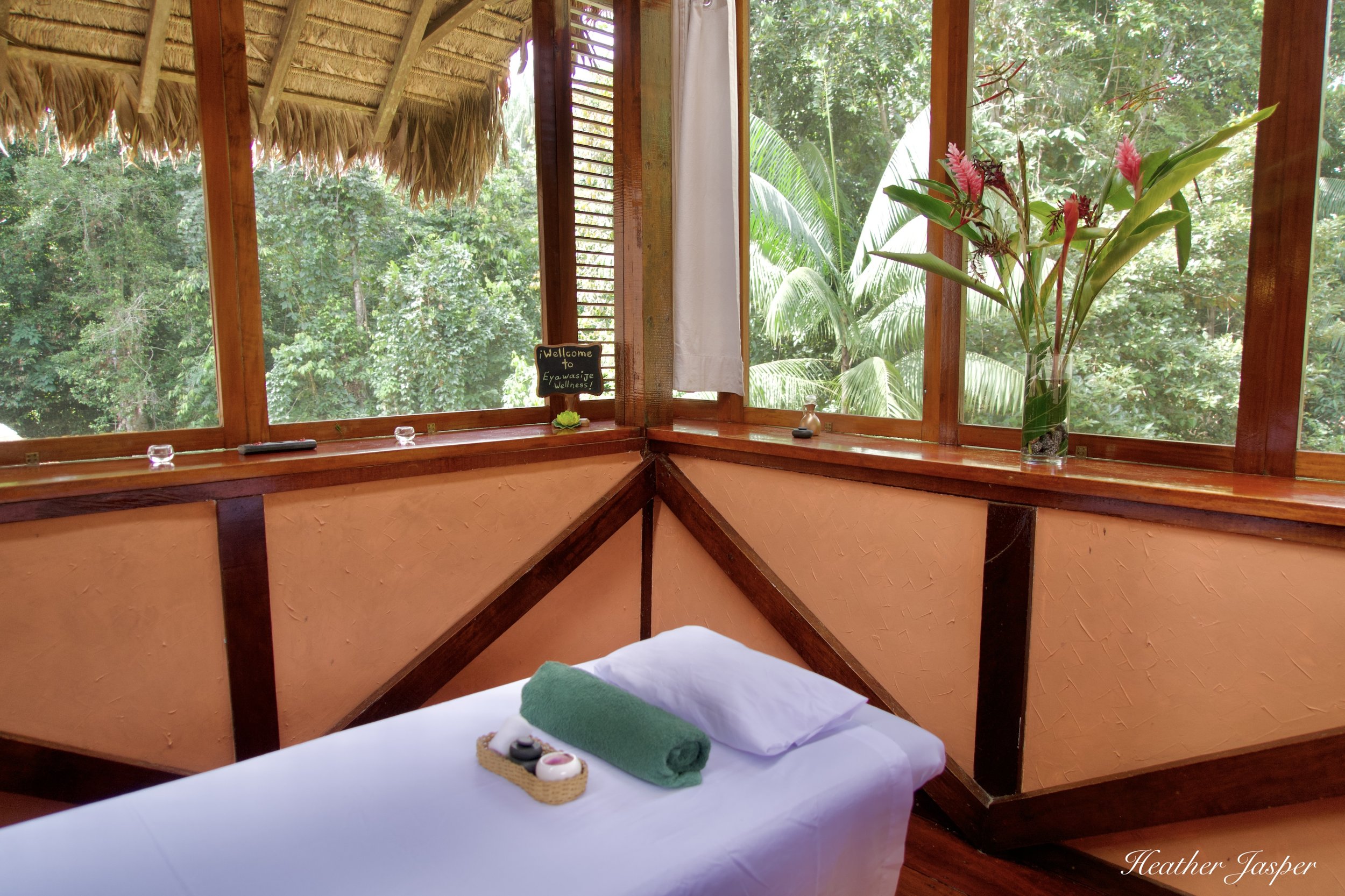Refugio Amazonas
This is the second part in a trip to three Rainforest Expeditions lodges. Go back to my Posada Amazonas blog if you want to start at the beginning.
Refugio Amazonas is one of the best places to stay in Peru!
I loved the wildlife I saw, the suite I stayed in, the food and the facilities at the lodge. Read my full review of Rainforest Expeditions lodges in Luxury Latin America.
Welcome to Refugio Amazonas
As I walked from the boat to the lodge, a family of night monkeys peered at me with curiosity. It was the start of two days full of wildlife.
The wildlife at Refugio Amazonas
My first night my guide Carmen took me on a walk through the forest, where I saw the usual frogs, bugs, and spiders. I’ve done a lot of night walks in the Amazon rainforest and I always love them. Two things really impressed me that night. The first was that we saw six wandering spiders, two of which were black. I’d never seen a black wandering spider before and two in one night was amazing. Wandering spiders get their name from their lifestyle. They don’t build webs but wander the forest looking for prey. They are also the most poisonous spider in the world.
Fireflies that don’t fly
The other thing that I loved was a narrow gully that Carmen showed me. She quickly shown her light on the earthen walls that were more than head high and only a couple yards across. Then she told me to turn my flashlight off. My eyes didn’t have to adjust to the darkness before I saw the earth light up, as if whole constellations of stars surrounded us. It was female fireflies, who light up when they see a bright male fly by. Our flashlights must have looked particularly attractive because we were surrounded by hundreds of little green points of light.
The next morning was punishingly early. At 4:15 I joined another group leaving the lodge to walk down to the boats. We were loaded and departing by 4:30 to get to a clay lick, called collpa in Peru, by sunrise at 6am. The idea was to be in place when the parrots and macaws arrived at the collpa, so as not to scare them with the boats and people walking around.
Collpas are clay filled with the minerals that parrots and macaws don’t get from their fruit diet. Collpas on riverbanks are favored by birds, while collpas in the forest are where mammals go for salt and other minerals. This is especially important for animals that eat lots of unripe or toxic fruit. The clay helps them process the toxins, so it doesn’t upset their stomachs.
The first collpa we went to was a bust. We waited for about half an hour, then had breakfast and waited some more. Not even a dozen birds came. As little as twenty years ago, you would see hundreds of birds at a collpa. Now, you’re lucky if you see forty or fifty. After breakfast we got back in the boats and went to a second collpa. Still no luck. Thankfully, the third try was the charm. We got back in the boats and went upstream to a third collpa and after we’d been there less than ten minutes, dozens of blue and yellow macaws, scarlet macaws, chestnut-fronted macaws, a few red and green macaws, blue-headed parrots, and yellow-crowned parrots started to flock to the trees above the collpa.
We set up with our cameras across from the collpa. There were several groups from different lodges.
Eventually, the first one flew down to the exposed wall of clay, dug in with its claws and took a bite. When no predator jumped out of the bushes above, a few more birds flew down, then critical mass took over and dozens descended from the surrounding treetops. After only five minutes or so, something spooked them and they all took off, squawking, back to the treetops. Still, no predator emerged and slowly they began to drift down from the trees to the exposed wall of clay. The second time they were spooked, they didn’t roost in the nearby trees, they flew back into the forest, away from the river and us sitting on the opposite bank.
Though the early morning left me exhausted, I was happy with how many birds we had seen, and the variety. Macaw populations are decreasing faster than parrots, as they tend to breed less often and are pickier about nests. Seeing four of Peru’s seven species of macaws all in one place was magical. (More about macaws in my next blog from the Tambopata Research Center).
On the boat ride back, we saw lots of wildlife, which are in the photos above. First, we saw a family of capybaras, with at least three generations in the group. We also saw a red brocket, which I had never seen before. It’s a species of tiny deer that lives in the rainforest. The third big find was a pair of horned screamers. Despite the name, they’re usually silent birds. Only the male has a horn, a thin keratin spike that grows from his forehead and occasionally breaks off, like fingernails.
Sunset from the tower at Refugio Amazonas on my second night at the lodge.
I was exhausted when we got back. I had a cold shower, which wasn’t cold enough, and rested a bit before lunch. After lunch I retreated from the heat to my room and went back to the cold-shower-then-stand-dripping-under-the-fan routine that I developed at the previous lodge. The humid heat of the jungle is intense, and I don’t tolerate it well at all.
In the afternoon, Carmen took me to the Refugio tower for bird watching and sunset. We saw several birds I’d never seen before, followed by a truly spectacular sunset. It was the perfect end to a lovely two days at Refugio Amazonas.
Early morning mist from the Refugio tower. It was magical to hear the birds and monkeys waking up.
The suite at Refugio Amazonas
The only positive thing about the heat was that it gave me an excuse to spend more time in my suite. The suite at Refugio was much larger than the room I had at Posada. The beds had higher mosquito nets, I had a minifridge and water filter, there was a seating area.
The bathroom was basically the same, with an identical shower that was glass on three sides and open on the fourth. It reminded me of the transporter from Star Trek.
The housekeeping staff arrange the mosquito nets during dinner, so you know there’s no bugs in your bed in the evening. When I was resting in my room, I lowered the mosquito nets myself, so I could comfortably lounge on the bed and doze off without worrying about bugs.
Hammocks in the rooms
All rooms and suites are open on one side and have hammocks so you can relax as you watch birds and monkeys in the forest.
Biodegradable toiletries
All soap, shampoo and conditioner are biodegradable to minimize impact on the rainforest.
The food at Refugio Amazonas
All meals at Refugio are buffets, just like Posada and the Tambopata Research Center. The chefs must all have the same training, because the food was quite similar. There were three or four salads or cold vegetable dishes, which honestly was about all I could eat in such a hot and humid climate. There was always a soup and one or two meat options.
The desserts looked good but I preferred the fruit table, which was available all day. It had the usual apples, oranges and bananas, plus pineapples, coconuts, passionfruit, cacao pods, copoazú and zapote. It was a lot more fun to pick out a copoazú pod or a zapote and ask the kitchen to open it than to eat a piece of cake. In the photos above, the brown pod that’s white inside is copoazú and the cut orange fruit next to it on the platter is zapote.
Kids’ play area
The kids’ play area is next to the main part of the lodge, which contains the dining area, a lounge, bar and upstairs the lab and spa.
Upstairs open lab
The open lab contains information about the flora and fauna of the Tambopata Nature Reserve and is where the biologist holds evening lectures.
The spa at Refugio Amazonas
I didn’t try the spa, but seemed odd to me that it would be in the main building, which was often a hive of activity and sometimes loud.
Carmen
Carmen made my time at Posada and Refugio Amazonas so much fun! I recommend requesting her when you book with Rainforest Expeditions.
On the river again
After I said goodbye to Carmen, it was back on the river and on my way to the Tambopata Research Center.

